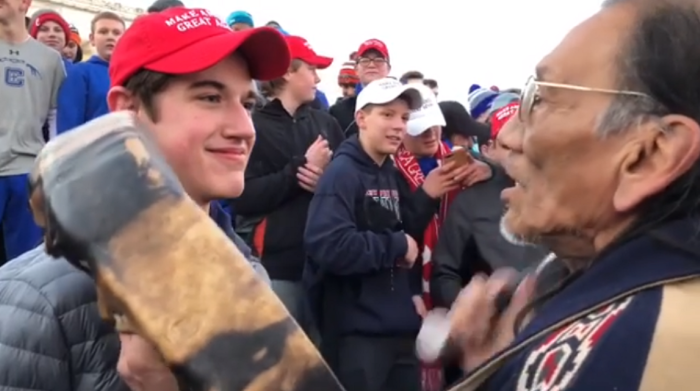Covington Catholic student Nick Sandmann gets settlement from CNN in defamation lawsuit

A pro-life Covington Catholic High School student has reached a settlement with CNN over a defamation lawsuit he brought against the news outlet for their false reporting about him last year that led to death threats against him and other students.
Nicholas Sandmann filed the suit against CNN and other media outlets for their coverage of him at the 2019 March for Life rally when a Native American and former Marine named Nathan Phillips confronted him and other teens.
“Yes, We settled with CNN,” Sandmann announced on Twitter Tuesday, getting by Wednesday morning around 12,700 retweets and more than 74,000 likes.
The lawsuit was part of an overall litigation against CNN, The Washington Post and NBC Universal, seeking $800 million in damages.
Lin Wood, attorney for Sandmann, said the large sum was based off the “emotional distress Nicholas and his family suffered” as a result of the negative coverage, according to WXIX Fox 19.
Wood said the negative coverage based off the misinterpreted video forced Sandmann’s family to temporarily move and for him to be unable to attend school.
The coverage also led many in the media and entertainment industry to call for violence against Sandmann, his classmates, and their Catholic school as a result of the false claims.
“Honest question,” tweeted author and former CNN contributor Reza Aslan with a photo of a smiling Sandmann at the time, “Have you ever seen a more punchable face than this kid's?”
At issue was a viral video many in the news media wrongly reported as Sandmann aggressively confronting Phillips of the Omaha tribe while he played a ceremonial drum.
Sandmann and some of his classmates were wearing “Make America Great Again” baseball caps, a symbol of support for President Donald Trump that has been labeled by some in the media as a symbol of hate.
The incident took place in January 2019 in Washington, D.C., where Sandmann was attending the March for Life rally and Phillips was attending the Indigenous People’s Rally.
While CNN and The Washington Post, among others, reported that the video showed Sandmann and the Covington students being disrespectful toward Phillips, the release of an extended video of the incident showed that the encounter was more complicated than initially reported, prompting some news outlets to correct their stories.
For example, the first video did not show a group of anti-Semitic Black Hebrew Israelites shouting slurs at both the Native Americans and the Covington students. It also did not show that it was Phillips who was acting aggressively toward Sandmann.
Last February, the Catholic Diocese of Covington, which oversees the high school Sandmann attended, released a report from a private detective agency concluding that there was no evidence that the Covington students engaged in wrongdoing.
“I never interacted with this protester. I did not speak to him. I did not make any hand gestures or other aggressive moves. To be honest, I was startled and confused as to why he had approached me,” said Sandmann in a statement released soon after the incident.
“We had already been yelled at by another group of protesters, and when the second group approached I was worried that a situation was getting out of control where adults were attempting to provoke teenagers.”





























